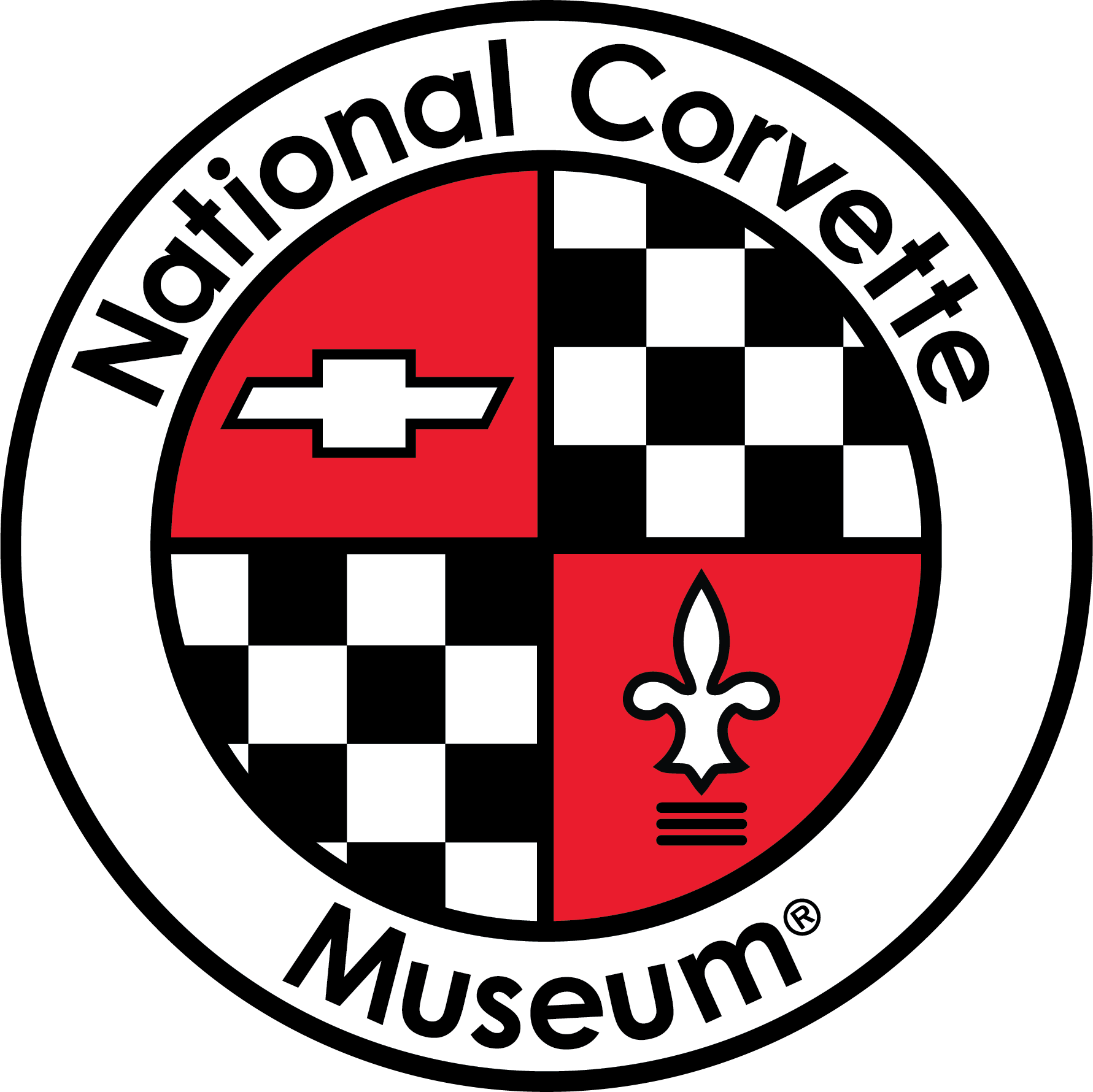Introducing Sensational New Fuel Injection
The styling of the 1957 Corvette was largely unchanged, however the performance vastly improved. In 1957 the new Corvette took a giant stride forward with the introduction of the new Ramjet Fuel Injection. This was at the time, the most advanced performance feature ever offered on an American production engine. The Ramjet Fuel Injection, an efficient constant flow system that eliminated the carburetor, delivered fuel directly to the cylinders for instantaneous accelerator response, greater overall fuel economy, higher low-speed torque and smoothness, ease of starting and overall improvement of engine performance, was sensational. In one bold stroke the 1957 Chevrolet Corvette provided a new dimension of driving pleasure.
For The First Time In Automobile History- ONE H.P. For Every Cubic Inch
Now with Fuel Injection, the 283-h.p. senior engine in the Corvette line attained a milestone in American Automotive history- one horsepower for every cubic inch. In fact, all four Corvette engines had been increased to 283 cubic inches of displacement. The other three basic Corvette engines were the standard 220 h.p. V8, the 245 h.p. twin four-barrel V8 and the 250 h.p. V8 with Fuel Injection.
Standard equipment with the 1957 Corvette was a special 3-speed close ratio transmission. Also, in tailoring the Corvette to individual taste, a special version of the smooth Powerglide transmission was available as an extra-cost option with certain engines. In any combinations, the Corvette driver commands the most remarkable road car in America- and a show stopper for looks, luxury, and comfort.
Engine
Valve-in-head V8, 283-cubic-inch displacement, 3.88″ bore x 3.0″ stroke, 9.5 to 1 compression ratio. 220 h.p. at 4600 r.p.m. with 4-barrel carburetor. 245 h.p. at 5000 r.p.m with Ramjet Fuel Injection system. High-lift camshaft, hydraulic valve lifters. Independent operating mechanism for each valve. Cast aluminum rocker covers on optional engines. Buffed aluminum racing-type oil-wetted air cleaners, chrome plated single air cleaner with fuel injection. Five-bearing forged steel crank-shaft. Special replaceable-insert main and connecting rod bearings. Full-pressure lubrication system with full-flow oil filter. Full dual exhaust system. Shielded ignition, 12-volt electrical system. Engine precision balanced after assembly.
Maximum performance 283 h.p. at 6200 r.p.m. engine available only with close-ratio Synchro-Mesh features Ramjet Fuel Injection system, 10.5 to 1 compression ratio, competition-type camshaft, and high-speed valve system with special valve springs, spring dampers, and mechanical valve lifters.
Transmission
Choice of special 3-speed close-ratio Synchro-Mesh (2.2:1 low and reverse, 1.31:1 second, 1:1 high) with high-capacity 10-inch semi-centrifugal coil spring clutch, or optional Powerglide special automatic transmission. Floor mounted gear or range selector.
Chassis
Drive System- Hotchkiss drive, with unit-balanced tubular propeller shaft and universal joints.
Rear Axle- Semi-floating hypoid with single unit banjo housing. Axle ratios: with Powerglide, 3.55:1; with close-ratio Synchro-Mesh 3.70:1. Positraction axle with 3.70:1, 4.11:1, or 4.56:1 ratio optional with close-ratio Synchro-Mesh only.
Frame- Extra-rigid box girder frame reinforced with “X” member.
Suspension- Independent coil spring front suspension with ride stabilizer. Outrigger mounted semi-elliptic rear springs. Direct double-acting shock absorbers.
Steering- Full anti-friction steering gear with balanced steering linkage, 16:1 overall ratio. Turning diameter (curb to curb), 36.55 feet right, 36.93 feet left.
Exterior Features
Glass-fiber reinforced plastic body with sculpted side panels. High quality polished lacquer finish. Front hinged hood with inside latch release and automatic support. Large luggage locker with spare wheel well under floor, concealed top well behind seats. Dual exhaust ports. Chrome-bound windshield. Large screened cowl ventilator. Manually operated fabric top or lightweight easily removable plastic hardtop. Power-operating mechanism optional with fabric top.
Color Options:
- Polo White
- Onyx Black
- Aztec Copper
- Cascade Green
- Arctic Blue
- Venetian Red
- Inca Silver
Mechanical Dimensions
| Wheelbase | 102.0 in |
| Track Frt/Rear (in) | 57.0/59.0 |
| Length | 168.0 in. |
| Width | 70.5 in. |
| Height | 51.9 in. |
| Frontal Area | N/A |
| Ground Clearance | N/A |
| Curb Weight | 2849 lbs |
| Weight Dist. F/R (Engine) | 53/47 |
| Fuel Capacity | 6.4 gal |
| Coolant Capacity | N/A |
Engine Specifications
| Base | 469A | 469C | 579A | 579B | 579C | 579E | |
|---|---|---|---|---|---|---|---|
| Bore | 3.875 in. | ||||||
| Stroke | 3.000 in. | ||||||
| Displacement | 283 ci | ||||||
| Compression Ratio | 9.5:1 | 9.5:1 | 9.5:1 | 9.5:1 | 10.5:1 | 9.5:1 | 10.5:1 |
| Cylinders | 8 | ||||||
| Block | Cast Iron | ||||||
| Horsepower | 220 bhp @ 4600 rpm | 245 bhp @ 5000 rpm | 270 bhp @ 6000 rpm | 250 bhp @ 5000 rpm | 283 bhp @ 6200 rpm | 250 bhp @ 5000 rpm | 283 bhp @ 6200 rpm |
| Torque | 300 lb-ft @ 3000 rpm | 300 lb-ft @ 3800 rpm | 285 lb-ft @ 4500 rpm | 305 lb-ft @ 3800 rpm | 290 lb-ft @ 4400 rpm | 305 lb-ft @ 3800 rpm | 300 lb-ft @ 3000 rpm |
| Fuel Delivery | 4-bbl | 2×4-bbl | 2×4-bbl | Fuel Injection w/ Powerglide | Fuel Injection | Fuel Injection w/ Powerglide | Fuel Injection |
| Oil Capacity | 5 Quarts | ||||||
| Valvetrain | Pushrod | ||||||
1957 Production Options and Build Statistics
Total 1957 Corvettes Built – 6,339 – All Convertibles
A Dramatic Advance In Experimental Sports Car Design
Purely experimental, in 1957 a special Chevrolet Corvette concept car was made. This unique model was the product of creative engineering research and served as the forerunner of numerous Corvette sports/ racing models. It incorporated many advanced features that helped shape future automotive design in America’s sports car.
General Data- Wheelbase, 102 inches, Overall length 168 inches. Tread 51.5 inches front and rear. Curb weight 2849 pounds.
Body Structure- Special low-weight magnesium alloy skin over truss-type tubular frame of welded chrome-molybdenum tubing. This lightweight tubular-truss frame is exceptionally rigid, and highly resistant to torsion and shock. Low plastic windscreen shields front and sides of two-passenger cockpit when aerodynamic bubble is removed. Headrest housing encloses a sturdy safety bar. Front and rear body sections are hinged, and can be raised for easy access to the engine and rear suspension system.
Power Plant- Engine is basically a production Chevrolet “Corvette V8″ with Ramjet Fuel Injection, special camshaft, and low-weight valve system with mechanical valve lifters. Displacement 283 cubic inches, bore and stroke 3.875″ x 3.0”. Engine output more than 300 horsepower. Special experimental features include aluminum cylinder heads, clutch housing, water pump and radiator core. Oil pan is a specially engineered magnesium casting. Large exhaust pipes flow from individual cylinders into collector pipes equipped with low-resistance, straight-through type mufflers. Engine weight per horsepower is approximately 1.5 pounds.
The high-capacity coil spring clutch is hydraulically operated. Generator is 12-volt lightweight aircraft type. An engine oil cooler is included in the bottom of the aluminum radiator core. No fan is required. Special plastic 43-gallon fuel tank is located behind the driver. Fuel is supplied to the engine by two electric fuel pumps.
Transmission- Special Chevrolet close-ratio 4-speed with full Synchro-Mesh in all forward gears. With aluminum alloy case, entire transmission unit weighs only 65 pounds. Gear ratios: (1st) 1.87:1, (2nd) 1.54:1, (3rd) 1.22:1, (4th) 1:1, (Rev) 1.87:1. A short propeller shaft connects transmission with frame-mounted rear axle differential assembly.
Differential- Cast differential case of low-weight alloy features quick change gears, with final drive through spiral bevel ring and pinion of 3.55:1 ratio. Interchangeable quick change gears permit a combined ratio range from 2.63:1 to 4.80:1.
Suspension- Front wheels are independently suspended through non-parallel rubber-bushed control arms, forged steering knuckles with spherical joints, coil springs, and tubular shock absorbers. Sway is controlled by a link-type stabilizer bar. Front suspension geometry achieves a high roll center that contributes to excellent handling and stability.
Rear suspension is based on the DeDion principle, with differential assembly rigidly attached to the frame and road wheels interconnected by a tubular member. Axle shafts drive the wheels through universal joints.
An important advantage of this design is a low ratio of unsprung-to-sprung weight, since the differential assembly is carried by the springs. Drive line torque reactions are absorbed by the frame without affecting rear wheel loading. Suspension movement at the rear wheels is uniquely controlled by four arms that link the frame and the DeDion tube.
Brakes- Vacuum power assisted, with separate power units for front and rear brakes operated by a single pedal. Maximum braking force to rear wheels can be adjusted for most effective stopping power. Rear brakes are mounted inboard, next to the differential case. Brake facings are specially engineered for durability, and offer exceptional resistance to brake fade. Composite drums have cast iron braking surface with finned aluminum outer rim to increase heat dissipation. Rear suspension design transfers braking forces directly to the frame.
Steering– Steering is precise and accurate, with recirculating ball-type gear, and linkage located forward to front wheel spindles. Overall steering ratio is 16:1.
Wheels and Tires- Quick-change wheels are low-weight cast magnesium with knock-off hubs. Special sports-type tires are 6.50/ 6.70-15 6 ply.

